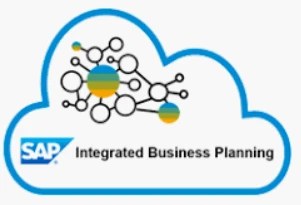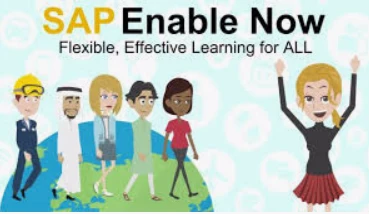The SAP industry after the COVID-19 crisis - Peering through the fog
The SAP industry after the COVID-19 crisis - Peering through the fog.
No-one knows how long this crisis is going to last but the evidence is mounting that the way we work will change forever. There are a number of reasons for this and many of them will have profound effects upon the operation and configuration of our SAP systems.
What will the SAP “new normal” look like after we emerge, battered and bruised from the ravages of COVID-19? Already, SAP clients are moving quickly to react to growing supply chain and administrative pressures. Inevitably, organisations that are able to turn their short term adaptations into long term innovations will win. How many of these changes will become entrenched or will be adapted to the new world order is yet to be seen, but here are a few things to watch out for in the coming months and years.

1. Re-imagining the workplace
The virtual office - this is the most obvious change which has come about recently. Even before COVID-19 hit, the workplace was moving more and more into the virtual space. There are ways SAP can help here, already discussed in this previous Eursap blog.
2. Supply chain re-imagination and rampant cost controls
As the inevitable global downturn bites, consolidation of production, distribution and the establishment of shared services will be at the forefront of many organisations' strategy.
Cost controls will focus, in an IT environment, on standardization to drive down support and maintenance costs. This standardization is central to the SAP ethos and can be delivered effectively using Focused Build with SAP Solution Manager.
Supply chain re-imagination may take many different guises according to the industry you are in. The old supply chain you had pre-virus may not be fit for purpose in a financially challenged, post-virus world. Let’s explore the way our supply chains may be effected and what SAP can do to help.
a. Supply chain globalisation – is it right for you now? In the virus era, many organisations moved supply chains closer to the consumer, but is that sustainable or right for you now? Certainly supply chain flexibility is now an essential part of life, but traditional SAP supply has restrictions on flexibility without some additional innovation considerations. This could be in the form of Advanced Planning and Optimization (APO), or the equivalent embedded capabilities in S/4HANA. Alternatively, the SAP cloud solution Integrated Business Planning (IBP) provides a next generation real-time planning optimization tool.

b. Third party drop ships. Many organisations have made the most of vendor flexibility in delivering direct third party drop ships to end clients. SAP helps with this here.
3. Automation
To reduce manual intervention and manual handling of data processing, there are a few options within SAP:
a. Electronic Data Interchange (EDI), where businesses connect their ERP system to yours through EDI messages for purchase orders, confirmations, advanced shipping notifications, amendments, stock checks and invoices. EDI has been around for a long time and is quite highly developed now. See this recent Eursap blog for more information on managing EDI messages in S/4HANA.
b. Full interaction with vendors through a collaborative network such as SAP Ariba. Ariba connects your business with millions of suppliers across the globe - $3.2 trillion per year pass through its network in 190 countries. See the Ariba website for more information.

c. SAP Robotic Process Automation (RPA) takes the manual intervention out of many SAP processes. Through SAP RPA you can build bots to mimic what a user would do but without the expense of a real user. This could be automation of financial processing, month end processing, invoice receipting, sales order processing and many other processes. See this recent Eursap blog for details.

4. People
You need to source the right talent at the right time and quickly, right? SAP Fieldglass can help here. With Fieldglass you can manage your entire workforce through requisitions, contacts with recruitment vendors such as Eursap, right through to invoice and analytics. Onboarding, backgrounding and security checks are all automated via Fieldglass. See the Fieldglass website for more information.

5. Training
Your entire organisation has gone through a culture shift. The old model of sitting in a training room just isn’t going to cut it anymore. So how do you manage your online training now using SAP?
a. For end user SAP training, there is a really nice application called SAP Enable Now, which is available at a very reasonable cost from $10/user per month. SAP Enable Now allows you to record a training session with links to which field to click on in an interactive video (for SAP and non-SAP systems). The format is extremely easy to use and very easy to follow – see here for demonstration video from SAP.

b. For your SAP consultants, keeping on top of their game is going to be more important than ever. Aside from the traditional SAP training course, many of which are virtual classroom based, there is the free to use openSAP. openSAP offers enterprise MOOCs (Massive Open Online Courses) with the flexibility to learn in your own time.

6. “Paperless office”
A real 1990s/2000s phrase but this could have geunine implications for traditional companies who still rely on printed output forms and mail. This can also apply more these days to warehouses which rely on printed picking lists etc. Here are your options for going fully online with output forms and paperless contact.
a. Implementation of e-mailed output forms such as order confirmations, despatch advices, invoices and purchase orders have been the norm in SAP for many years now. There are however, many ways of achieving this:
i. Embedded traditional SAP technologies based upon “NAST” outputs with “external send” capabilities.
ii. S/4HANA enabled outputs through using BRF+ - see this useful SAP blog for more information.
iii. Third party SAP “plug ins” which build upon native SAP capabilities and offer richer, leaner, more flexible output options. Examples such as Varo and Floe by Arch are good recommendations – see the Arch website for more information.

b. SAP Extended Warehouse Management (EWM) offers full end-to-end warehouse operations including yard management, internal movements and inbound and outbound logistics – all with RF and voice-based scanning

c. Life sciences and pharmaceutical industries may want to make use of SAP Manufacturing Execution System (MES) to provide an Electronic Device History Record (eDHR) and so save using paper lot cards.
d. SAP conversational bots through Artifical Intelligence. Using SAP’s AI suite, it is now possible to build your own conversational bot, thus streamlining communications across your business. A recent Eursap blog highlights the need to maintain specific design and implementation principles to make the most of this approach. SAP also offers its own out-of-the-box chatbot in SAP CoPilot, which can manage all your digital interactions in one place.

e. Implementation of a fully online ticketing system for handling all incoming physical mail and tracking through the operational flow.
7. Tighter regulations
Your IT will need to be agile and flexible as governments around the world flex their muscles in response to the crisis. This will be exacerbated by the fact that most governments will have huge support to do so, so will feel emboldened. SAP is generally very good at responding to such regulatory changes and can support you with active SAP Notes, available in the SAP Support Portal to update your system. It is vital that your SAP architecture team are on top of this and looking out for new notes. All the important SAP Notes are pushed out to their website here:

The “new normal” for the SAP world will be challenging, there is no doubt. However, as I hope can be seen here, it may also be a catalyst to galvanise organisations into action to protect their own markets and de-risk their business.
Author: Jon Simmonds, Senior IT Architect